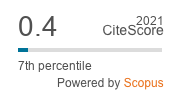Effects of photoperiod on the testis fusion in the Asian comma butterfly, Polygonia c-aureum Linnaeus (Lepidoptera: Nymphalidae)
DOI:
https://doi.org/10.33307/entomon.v41i3.176Keywords:
Imaginal diapause, male, reproduction, testis fusion, torsionAbstract
The progress of testis fusion in the immature stages ranging from the 4th larval instar larvae to the pupae in Polygonia c-aureum was compared between two photoperiods (short-daylength and long-daylength). In this butterfly, imaginal diapause induction is controlled mainly by photoperiod and temperature during the immature stages. The study investigated the relationship between the imaginal diapause and testis fusion. The results showed that photoperiod did not exert significant effects on the process of testis fusion, indicating that testis fusion does not relate to the imaginal diapause. A pair of testes fused to a single testis during the prepupal stage and testis torsion occurred shortly after pupation. However, though in rare cases, a few male adults which had been reared in the laboratory and caught in the field had two testes, suggesting no occurrence of testis fusion during the prepupal stage.
Downloads
Published
How to Cite
Issue
Section
License
Copyright (c) 2016 ENTOMON

This work is licensed under a Creative Commons Attribution-ShareAlike 4.0 International License.


